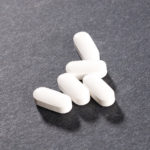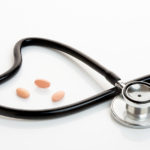By David Blyweiss, M.D.
As popular as statin drugs are, the doctors who prescribe them are finding one unexpected problem: Up to 40 percent of their patients either stop taking them or they refuse to take them in the first place! I’m not surprised. Statins carry a host of side effects, including gastrointestinal problems, headache, dizziness, fatigue, rash and sleep disturbances. More serious side effects include muscle weakness, myopathy, nerve damage, liver damage and rhabdomyolysis – the breakdown of muscle tissue that can lead to potentially fatal kidney failure.
Unfortunately, most doctors don’t know that there are natural alternatives to statin drugs that are far safer and just as effective. So they take a different approach to this phenomenon. When scientists at the University of California, San Diego, investigated how doctors respond to patient reports of statin-related side effects, they found that most didn’t bother reporting these adverse events to the FDA. Instead, they denied that the drugs could cause undesirable symptoms, seemed not to care, told their patients they were imagining the pain, mistakenly attributed symptoms to aging or simply refused to believe their patients’ complaints!
MD Exposes the Hidden Danger to Your Eyes

When your eyesight starts to fail, it's a real problem. Suddenly you can't go to the grocery store... you can't get to the doctor if you have an emergency... you can't meet your friends for dinner…
Your "regular" doctor doesn't have time to keep up with the latest research. And the same goes for eye doctors. They go to school to learn how to fit you for glasses and contacts, but have no way of preventing the damage and loss of eyesight that threatens your freedom and independence.
Let me show you something that explains a LOT about how your eyes work.
In my FREE Special Report, I'll show you a HUGE, untapped resource for your eyes that safely and naturally restores clear, effortless eyesight.
Click here to get started...
But, as I said, there are alternatives. One of the best is red yeast rice. Red yeast rice is produced when a certain type of yeast, Monascus purpureus, is fermented over red rice. It has been used in Asian countries for more than a thousand years as both food and medicine. Recently, however, natural health practitioners in the U.S. and Europe have discovered its powerful cholesterol-lowering properties. One recent clinical trial by researchers at the University Of Pennsylvania School Of Medicine gave 43 adults with high cholesterol either 2,400 mg. of red yeast rice or 20 mg. of Pravacol. After 12 weeks, they found that that red yeast rice was not only slightly more effective, it was also better tolerated than the statin drug.
Are You Suffering From...
- Love handles and a pot belly
- Romance that isn't what it used to
- Forgetfulness and inattention
- Low (or no) strength and endurance
- A sex drive that's shifted into neutral...or worse
If so...you may have Mature Male Burnout. Click here to discover more about this unique condition and what you can do about it.
Other studies have found that red yeast rice can lower both total and LDL (bad) cholesterol. However, my conventional counterparts might be unfamiliar with this research. Here’s a quick run-down:
- An eight-week study at the University of California, Los Angeles, compared red yeast rice with a placebo in 83 people with high cholesterol. The results, which were published in the American Journal of Clinical Nutrition, showed that the supplement significantly reduced total and LDL cholesterol.
- In another study, which appeared in the Annals of Internal Medicine a group of physicians verified the significant cholesterol-lowering effect of red yeast rice in people who couldn’t tolerate statin drugs. The study included 62 people who stopped taking statins because of side effects. All of them followed a lifestyle change program that included learning about nutrition, exercise and relaxation techniques. Half also took 1,800 mg. of red yeast rice twice a day, while the others took a dummy pill. The group taking red yeast rice experienced an average drop in cholesterol of 43 points in a mere 12 weeks compared to just 11 points in the placebo group.
- Other research in China, which has been published in the American Journal of Cardiology and other scientific journals, has found that red yeast rice significantly reduces rates of heart attacks and deaths from heart disease.
The reason red yeast rice works so well is because it contains a small amount of a natural statin called lovastatin. Lovastatin is the same compound found in the prescription drug, Mevacor. But unlike Mevacor, red yeast rice also contains other compounds like plant sterols that might have a positive impact on blocking cholesterol absorption. Researchers have also determined that another ingredient in red yeast rice called monacolin K inhibits the production of cholesterol by interfering with HMG-CoA reductase, a key enzyme in the liver responsible for manufacturing cholesterol.
But, even though red yeast rice is a natural product, because it acts like a statin, it can still impact the liver to some degree. That’s why it’s important to have your liver function checked periodically. And like statins, red yeast rice may also inhibit the natural synthesis of coenzyme Q10 (CoQ10), which is needed for optimum heart health. Take 100 to 200 mg of CoQ10 daily when taking red yeast rice—or use a formula that combines red yeast rice and CoQ10.
References:
Becker DJ. Red Yeast Rice for Dyslipidemia in Statin-Intolerant Patients: A Randomized Trial. Annals of Internal Medicine. 2009; 150: 830-839.
Halbert SC. Tolerability of red yeast rice (2,400 mg twice daily) versus pravastatin (20 mg twice daily) in patients with previous statin intolerance. American Journal of Cardiology. 2010;105:198-204.
Yang HT. Acute administration of red yeast rice (Monascus purpureus) depletes tissue coenzyme Q(10) levels in ICR mice. British Journal of Nutrition. 2005;93:131-135






